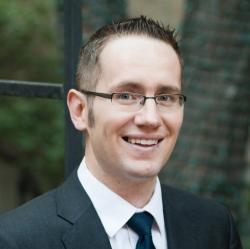
Want some free LSAT prep? Use the following sample LSAT questions to help you out!
Sample LSAT Questions
- Frank: Even though Lunar Minds has developed some highly successful technologies recently, I don’t think the company is a safe investment. As brilliant as its inventions have been, the company needs to invest more in developing a long-term business plan and an experienced workforce.
Wendy: A company does not have to plan a decade into the future to be a safe investment. If it can demonstrate that its current products are profitable and that it is currently developing additional promising products, then it may be a safe investment.
Wendy’s statements commit her to which one of the following positions?
(a) A company may still be considered a good investment even if it does not have a long-term business plan and an experienced workforce.(b) A company may still be considered a good investment even if it cannot demonstrate that its products are profitable and that it is currently developing more promising products.
(c) If Lunar Minds demonstrates that its current products are profitable and that it is currently developing additional promising products, then it should be considered a safe investment.
(d) If Lunar Minds has a long-term business plan and experienced workforce, it still may not be a safe investment.
(e) If Lunar Minds has not made any brilliant inventions, it is not a safe investment.
- An airplane manufacturer is determining how many seats to install in each of seven new airplane models–the Aztec, the Bermuda, the Calypso, the Drake, the Formosa, the Guadeloupe, and the Havana. The Bermuda, Calypso, and Guadeloupe are designed for long-distance travel while the Aztec, Drake, Formosa, and Havana are designed for short flights. Each model will be outfitted with either 50, 150, or 250 seats, according to the following guidelines.No long distance plane will have 50 seats.
All fuel-efficient planes are outfitted with more seats than planes that are not fuel efficient but are designed to travel the same distances.
The Aztec, the Calypso, and the Formosa are the only fuel-efficient planes.
(a) [Long-distance] Bermuda: 50 seats; Calypso: 250 seats; Guadeloupe: 150 seats
[Short-distance] Aztec: 150 seats; Drake: 50 seats; Formosa: 150 seats; Havana: 50 seats(b) [Long-distance] Bermuda: 150 seats; Calypso: 150 seats; Guadeloupe: 150 seats
[Short-distance] Aztec: 250 seats; Drake: 50 seats; Formosa: 250 seats; Havana: 50 seats(c) [Long-distance] Bermuda: 150 seats; Calypso: 250 seats; Guadeloupe: 150 seats
[Short-distance] Aztec: 150 seats; Drake: 50 seats; Formosa: 250 seats; Havana: 50 seats(d)[Long-distance] Bermuda: 150 seats; Calypso: 250 seats; Guadeloupe: 150 seats
[Short-distance] Aztec: 150 seats; Drake: 50 seats; Formosa: 50 seats; Havana: 50 seats(e) [Long-distance] Bermuda: 150 seats; Calypso: 250 seats; Guadeloupe: 150 seats
[Short-distance] Aztec: 250 seats; Drake: 250 seats; Formosa: 150 seats; Havana: 50 seats - Unlike Mercury and Mars, Venus has a dense, opaque atmosphere that prevents direct observation of its surface. For years, surface telescopes on Earth could glean no information about the surface of Venus. In 1989, the Magellan probe was launched to do a five-year radar-mapping of the entire surface of Venus. The data that emerged provided by far the most detailed map of the Venusian surface ever seen. The surface shows an unbelievable level of volcanic activity: over one hundred large shield volcanoes, many more than Earth has, and a solidified river of lava longer than the Nile. The entire surface is volcanically dead, with not a single active volcano. This surface is relatively young in planetary terms, about 300 million years old. The whole surface, planet-wide, is the same age: the even pattern of craters, randomly distributed across the surface, demonstrates this. To explain this puzzling surface, Turcotte suggested a radical model. The surface of Venus, for a period, is as it is now, a surface of uniform age with no active volcanism. While the surface is fixed, volcanic pressure builds up inside the planet. At a certain point, the pressure ruptures the surface, and the entire planet is re-coated in lava in a massive planet-wide outburst of volcanism. Having spent all this thermal energy in one gigantic outpouring, the surface cools and hardens, again producing the kind of surface we see today. Turcotte proposed that this cycle repeated several times in the past, and would still repeat in the future.
To most planetary geologists, Turcotte’s model is a return to catastrophism. For two centuries, geologists of all kinds fought against the idea of catastrophic, planet-wide changes, such as the Biblical idea of Noah’s Flood. The triumph of gradualism was essential to the success of geology as a serious science. Indeed, all features of Earth’s geology and all features of other moons and planets in the Solar System, even those that are not volcanically active, are explained very well by current gradualist models. Planetary geologists question why all other objects would obey gradualist models, and only Venus would obey a catastrophic model. These geologists insist that the features of Venus must be able to be explained in terms of incremental changes continuously over a long period.
Turcotte, expecting these objections, points out that no incremental process could result in a planet-wide surface all the same age. Furthermore, a slow process of continual change does not well explain why a planet with an astounding history of volcanic activity is now volcanically dead. Turcotte argues that only his catastrophic model adequately explains the extremes of the Venusian surface.
Which of the following would constitute evidence against Turcotte’s model?
(a) The success of gradualist models explaining the surface of Mars.(b) An even more detailed map of the surface of Venus.
(c) An even longer river of lava on Io, a moon of Jupiter.
(d) A few active volcanoes on Ishtar Terra, a continent on Venus.
(e) A volcano on Earth releasing a massive burst of thermal energy all at once.
Explanations
Question 1
This is a logical reasoning question. More specifically, it is a conclusion and inference question. To determine what kind of logical reasoning question you are looking at, you will need to read the call of the question. Here are some common ways the test-makers will frame conclusion and inference question are as follows:
- “The statements above, if true, most strongly support which of the following conclusions?”
- “Which of the following can be logically inferred based on the information above?”
- “If the statements above are true, which of the following must be true on the basis of them?”
- “Which of the following hypotheses receives the strongest support from the given information?”
When you are dealing with one of these types of questions, know that the conclusion MUST be 100 percent airtight. There can be absolutely no holes in it. If there are any holes, then the answer choice is wrong. It’s pretty simple. In the answer choices, you will want to look for answer choices that contain superlatives first, such as MUST, MUST NOT, or NEVER. There is a good chance they are wrong. Now, let’s take a look at the answer choices.
(a) This is the correct choice. Keep in mind that though Wendy does not mention a company having an experienced workforce, her argument is simply a counterpoint to Frank’s argument. She was very clear that a company with profitable products and additional products on the way may be a safe investment, even if it doesn’t have a long-term plan and experienced workforce.
(b) This answer is tempting because it runs very close to what Wendy said. However, it falls short because it brings up something that neither Wendy nor Frank spoke about. Answer choice (b) speaks to companies that cannot demonstrate certain things. If you read the question again, you will see that neither person brought this point up. Remember, the conclusion or inference must logically follow from the premises. If a particular premise is not mentioned, then any conclusion that brings up something not there is wrong, plain and simple.
(c) This answer choice is wrong because it contains a superlative, or at least something very close to one. The answer choice states that if something happens then it should be a safe investment. Be careful here. While Wendy did argue similar to this point, she clearly stated that a company that can demonstrate current profitable products and development of additional, innovative products may be a safe investment. This answer choice overstates Wendy’s argument.
(d) This answer choice is incorrect for reasons similar to choice A. It brings up companies with long-term business plans, something that Wendy did not address.
(e) This choice is incorrect because it uses the word brilliant when describing inventions. However, Wendy only argued that the inventions need to be innovative. Once again the answer choice overstates what Wendy is arguing, and is wrong because of it.
Question 2
This one is an Analytical Reasoning question, or logic game. The analytical reasoning section is probably one of the most talked about sections among pre-law students, and for good reason. The questions are long, there are a bunch of details, and the rules can get really confusing.
When you are looking at a logic game, the first thing you want to do is figure out all the rules you can infer from the rules you are given. You will also want to just use the first letter of each flight in this case so you don’t have to write down the names over and over again.
So, with this question, you’ll want to map out each flight. That would be the long-distance flights B, C, G, and the short distance flights A, D, F, H. You’ll also want to map out the number of seats, which are 50, 150, and 250.
The first rules says that no long distance planes will not have 50 seats, so that means that B, C, and G can be crossed off the 50 seat list.
Next, note that if two planes are flying to the same place, the fuel-efficient planes will have more seats than the non-fuel efficient ones. We are also told that the only fuel-efficient planes are A, C, and F. Now we can look at rules we can infer. Since the planes are divided up into short distance and long distance, we can definitely make some inferences.
First, for the short distance flights, we can infer that A and F will have more seats than D and H, simply based on the planes’ fuel efficiency. Second, for the long-distance flights, we know that C will have more seats than B and G. What else can we infer?
Well, A, C, and F can’t have 50 seats. This is because C is a long distance flight, and can’t have 50 seats, and because A and F are short distance flights, but since they are fuel efficient, they will have more seats than their non-fuel efficient short distance flight siblings. Additionally, and B, D, G, and H can’t have 250 seats because they are all non-fuel efficient, and thus can’t have the highest amount of seats.
Finally, we can look at the actual flights. Let’s start with B and G. They are long-distance, but not fuel efficient flights. Since they are long distance, they can’t have 50 seats, and since they’re not fuel efficient, they can’t have 250 seats. That leaves 150 seats for those planes. Next, we can look at flight C. Since it’s long distance, and fuel efficient, it must have more seats than B and G. That leaves 250 seats. Now we can look at the answer choices.
(a) This answer is incorrect because it breaks the first rule, which says that no long-distance plane will have 50 seats. Bermuda is a long-distance flight, so it can’t have 50 seats. You can simply ignore the rest of the answer choice here and move on.
(b) This answer choice is also wrong because we know from the rules that fuel-efficient planes will have more seats than non-fuel efficient planes traveling the same distance. This choice says that B, C, and G all have 150 seats. This is impossible because these three flights are the long-distance flights, and they can’t have the same number of seats. Also, from our inferences, we were able to determine that B and G have 150 seats, and C has 250 seats.
(c) This answer is correct. However, rather than circling this answer and moving to the next question, you should have gone through (d) and (e) to make sure they were incorrect.
(d) This answer choice is also wrong in the same way that (b) is wrong. Only this time the mistake involves the short distance planes. From the rules, we know that D and F cannot have the same number of seats. But, in this answer choice they do.
(e) Finally, this choice is incorrect because it has flight F with fewer seats than flight D. Remember that both of these flights are short-distance, but F is the fuel-efficient flight. According to the rules, D simply can’t have more seats than F.
Question 3
Finally, we have a reading comprehension question. It’s long … sorry about that. Now, how to do a reading comprehension question. There is no sure-fire way to nail a reading comprehension question. You just need to read a bunch of these things, get really good at remembering the content, and get even better at marking up your exam so you can look back and reference an important section. Check out this article on LSAT reading comprehension to learn more about the different kinds of reading comprehension questions.
Now, lets go through the answer choices one by one.
(a) This answer is incorrect. It’s tricky because it uses information from the reading passage. Unfortunately, the portion it uses is taken out of its context. Not only does the gradualist model not constitute evidence against Turcotte’s model, but Turcotte’s model was established with the gradualist model already well established. If anything they compliment each other.
(b) This answer is incorrect. This answer states something that we can’t know until a more detailed map comes out. However, there is no guarantee that the new map will provide any evidence against Turcotte’s model. So, while it could weaken Turcotte’s model, we don’t know. At this point you’ll want to move on and see if there is anything stronger.
(c) This answer is incorrect. This answer choice is even weaker than choice (b). The point it brings up has very little relevance to Turcotte’s model, which deals only with Venus’s surface.
(d) This answer is correct. Turcotte’s model is based on the “catastrophist” model, which is in stark contrast to the gradualist model. This answer is the most correct because a few active volcanoes would tend to have a gradual effect on the planet over time. This would most definitely give compelling evidence against Turcotte’s model.
(e) This answer is incorrect. It fails because the analogy is not a complete one. This answer choice brings up a single volcanic explosion in one part of the planet. However, Turcotte’s model is based on planet-wide volcanic activity. It’s therefore irrelevant.







Leave a Reply